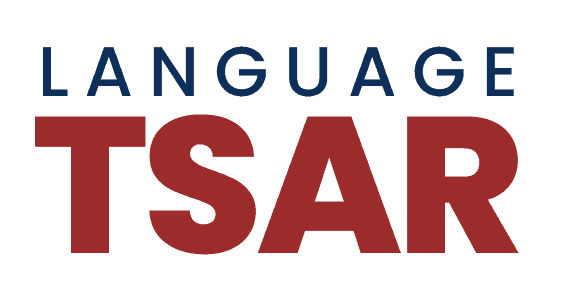Some decisions in life are tough. Deciding between Duolingo vs Memrise is one of them.
Today, we are going to take a closer look at two of the most popular free language learning apps out there, and find out which one is best for your learning style.
The first word that pops into my mind when l think about an app like Duolingo and Memrise is: EASY.
Both apps are an easy way to build a new habit.
And we all know how building habits is crucial when learning a new language. Like any other skill, consistency is more important than hard work.
Some of us are great procrastinators, therefore if a new habit isn’t easy enough at the start, there’s a chance we get discouraged and stop before we even begin.
As both apps are at your fingertips, there is no need to make any learning plans, prepare notebooks, make a schedule, the idea is to learn whenever you have a few free minutes. Duolingo and Memrise make your habit so easy that it’s hard to say no. And that’s the whole point.
Duolingo and Memrise changed forever the way we learn languages. They became so popular over the years that today Duolingo has over 300 million learners, while Memrise claims over 35 million learners.
Both Duolingo and Memrise are accessible, easy to follow, and beginner-friendly — and that makes all the difference.
Now, let’s take a deep dive into each app.
Memrise’s story
Since 2013, Memrise has become one of the most widely used language learning platforms, both website and mobile app.
Memrise’s transparent name suggests that it’s all about helping learners remember vocabulary and isolated sentences.
To achieve this, Memrise uses spaced repetition and flashcards.
The first thing you should know about this app is that its unique learning system was developed by Ed Cooke, a memory master, and Greg Detre, a Princeton neuroscientist specializing in the science behind memory and forgetting.
How Memrise works
Most memrise courses flow logically and intuitively. They start with elementary words and phrases and slowly get more advanced.At the beginning of each new course, you’re presented with vocabulary and a translation. We were impressed to discover that many flashcards are in fact short videos of native speakers saying the word or phrase. It’s a much more authentic way to learn the pronunciation when you see a native speaker moving lips.
Videos play a substantial role in Memrise, whether it’s to hear the pronunciation or in case of Chinese language, to see Chinese characters writing tips.
Learn and Immerse
Each course consists of two sections, “Learn” and “Immerse”.
The “Learn” section covers “Words and Phrases” and “Learn Grammar”. We guess you will spend most of your time, at least at the beginning, in the “Words and Phrases” section, picking up on new vocabulary, looking at video flashcards, listening to the audio, and choosing correct answers.
“Immerse” is slightly more challenging. It consists of short videos, where native speakers perform to illustrate a particular sentence, expression, or explain what they would say on a specific occasion. It’s not a textbook. Furthermore, it’s even better. Subtitles in your target language and English help you understand what’s going on the screen.
Memrise’s algorithm keeps track of the words you are struggling with. This means difficult words show up more frequently, while the ones you have already mastered get replaced by new vocabulary. Another personalized feature, allows you to tailor your experience, by making your vocabulary lists. However, this feature can be found and added only via a web browser.
On the good side, it has a wide variety of content available. On the downside, the same feature makes navigation a bit overwhelming. Well-structured courses are available mostly for beginners, but once you progress far enough, you can slightly lose your orientation.
Even for free members, you get to choose as many courses as you want. However, some nice features are only available for Premium subscribers, such as chatbots and grammar bots.
Features
- 26 language courses
- Based on neuroscience
- Spaced repetition
- Diverse content
- Native speaker’s videos
- Immerse and Learn section
- Personalized vocabulary lists
- Multiple languages learning
Duolingo’s story
Duolingo is a widely popular language learning platform (both website and mobile) with free and premium membership options, and a wide range of different language courses.
Duolingo became so popular over the years that believe it or not, it has more Irish language learners than there are Irish speakers in the world.
Since 2012, more and more languages were added, so today they could brag with ninety eight language courses, including three fictional languages: Esperanto, Klingon and High Valyrian.
Most courses are available to the public in English, and as of 2020, they offer more languages for non-English speaking learners.
It’s obvious that Duolingo’s goal is being accessible to literally every person on the planet. Everything within this platform is meant to be easy. Doulingo wanted to remove any possible obstacles or excuses standing in your way, to build a new learning routine. The app surely understands the power of taking small steps each day, as well as rewarding you for your consistency. And we believe that’s Duolingo’s biggest strength.
How Duolingo works
Gamified structure and visual learning style make Duolingo perfect for casual learners. Tests take the central part in its courses and each lesson covers one or more tests, including a final review test. Upon choosing a language, you have two possibilities, start as a beginner or take a placement test. A learning path is intuitive and gradually increases its complexity. First, you will be introduced to the new vocabulary in pictures, and little by little encounter them in sentences and expressions. Every incorrect answer will be repeated as many times as it takes to finally retain the answer. Duolingo makes sure you don’t get away without learning. One of the drawbacks is not having access to the following lessons until you finish the current one. If you want to learn more daily, you’ll have to go for the Premium solution “Duolingo Plus” so you could get the luxury of skipping lessons and practicing as much as you want. Duolingo teaches you to form a sentence and get a deeper understanding of the language structure. To achieve this, it relies on the grammar-translation method combining various methods such as:listening, reading sentences, voice recording, making phrases by putting the words in the correct order, and matching images to words. The downside is that the method sometimes leads to nonsensical sentences, with no real use in daily life.
With Duolingo, it’s super easy to learn multiple languages at once, However, not every language course offers equal quality. Some users complain that’s the case for languages with different alphabets.
Duolingo is the easiest tool that helps you build a habit and gets you started on a language journey. Metric “Streaks” count the number of consecutive days you have worked on Duolingo and rewards you for being consistent. However, it’s not self-sufficient to become an advanced speaker, and it was never meant to be. Duolingo stands as a comfortable complementary tool, especially for beginners in any language. It’s a great place to get the first contact with some languages or review the rusty ones.
Features
- 36 language courses
- Gamified tests
- Diversified reward system
- Gradual progress
- Public leaderboards where people can compete
- Some of the most active language forums around
- Grammar tips
- Topic lessons
Additional Features for some languages and purposes
- “Duolingo for Schools” is created to allow teachers to track students’ progress.
- Duolingo Incubator platform where volunteers can participate and contribute to create new language courses
- Podcasts in French and Spanish
Duolingo vs. Memrise: Similarities and differences
So far, we explained how both Memrise and Duolingo are great habit-builders, most of all because they offer chunked lessons, easy to swallow in a couple of minutes a day. Practicing your language skill whenever you have several minutes off is a great benefit. Speaking of convenience, they both offer mobile and desktop versions. The downside for both platforms is the limited speaking opportunity, but we don’t expect one app to cover everything. They are also beginner-friendly but not necessarily taking you to an advanced level.
Now, let’s talk about differences.
Duolingo is more of a general language learning site with a nice progressive curve, whereas Memrise is mostly vocabulary-oriented. As we see, they accomplish different goals. While Duolingo teaches you to build a sentence, Memrise is all about helping you remember individual words or phrases.
Both apps offer testing opportunities, but also differ in style. To test your knowledge, Duolingo uses gamified tests whereas Memrise spaced repetition. Duolingo has a much more diversified testing system, and on the other hand, Memrise contains much more interesting content to learn, such as native speaker videos and even an immerse section.
Duolingo works a lot to become accessible to everyone, including those who aren’t English speakers. Instead of English, Duolingo offers many other languages as French, Chinese, Nederland, German, Greek, Italian, Portuguese and many others.
DuoLingo Pros
- 98 language courses
- Much better for understanding how to construct sentences
- General language learning site
- Gradual progression
- Gamified testing options
- Grammar tips
- Very beginner-friendly
Memrise Pros
- 21 language courses
- Much better for remembering isolated words or phrases
- Spaced repetition system
- Vocabulary oriented
- Better sound recording
- Infinite possibilities in terms of vocabulary
- Great for irregular verbs
- Beginner-friendly and above
- Videos
- Immerse section
- Variety of content and topics
DuoLingo Cons
- Robotic sounding for some languages
- Could be slightly misleading for languages with different alphabets
- No videos
- Less effective for advanced language-learners.
- Nonsensical sentences
- Too many repetitions
Memrise Cons
- No level placement test
- Limited grammar instructions
- Less effective for advanced language-learners
Duolingo or Memrise: Which Is Better?
Instead of deciding which one is better, we say they compliment each other, simply because they reach different goals. Duolingo is better if you want to figure out how to make a sentence, and Memrise is perfect to help you build up your vocabulary or learn any kind of irregularities. Everything depends on what kind of gaps you need to fill. In case you are a complete beginner, then both apps go hand in hand.
In case you aren’t English speaker ( and your language is one of the languages on Duolingo’s list), you should go for Duolingo as it offers many languages to start with instead of English.
Speaking of sound recording, Memrise wins this battle, while Duolingo has a kind of robotic-sounding. As you can see, in different areas, we choose different winners. Sometimes it’s Duolingo and sometimes Memrise.
Should I upgrade to premium?
Memrise Pro comes with two additional features: the chatbot and grammarbot options. Chatbot lets you practice the target language, feeling comfortable to make mistakes, as you’ll be chatting with a well-equipped robot.
The grammarbot will send you messages to teach you different grammar points. It also tests your comprehension after the lesson. Memrise Pro brings more interactivity into the game, and having more interactive options it definitely lacks the free Memrise program.

Unlike Memrise, Duolingo Premium doesn’t include much more than the standard version. With Duolingo Plus, you get the luxury of removing ads, downloading lessons on mobile and learning as much as you can, without waiting for one day to pass. But, basically, you don’t get any additional content for upgrading. You do get the chance to learn faster though. In the end, subscribing to Duolingo Premium allows you fast-paced learning, and Memrise Pro offers some tech features such as the chatbot and grammarbot.
Duolingo vs. Memrise: Conclusion
No doubt both Duolingo and Memrise could help you become more consistent and allow you to build strong habits. If you are a casual learner, learning whenever you have free time is the convenience you’ll adore.
Both apps are very beginner-friendly, as well if you want to scrape the rust off. However, neither Memrise nor Duolingo leads you to complete fluency. These apps will allow you to go from A1 to A2, (Memrise slightly above) but you will indeed need a bit more if you want to go further.
Depending on your needs, we recommend choosing Duolingo if you want to get familiar with the sentence structure or grammar and opt for Memrise if you want to learn vocabulary. As a complete beginner, you will probably benefit most by using them hand-in-hand to get a complete learning experience.

Nikolija has been an avid language learner for many years. She became a language teacher, and more recently realized she wants to explore how being a creative learner helps you acquire a new language. Her most recent project was developing a textbook for learning French language (B1) through storytelling and creative projects.


